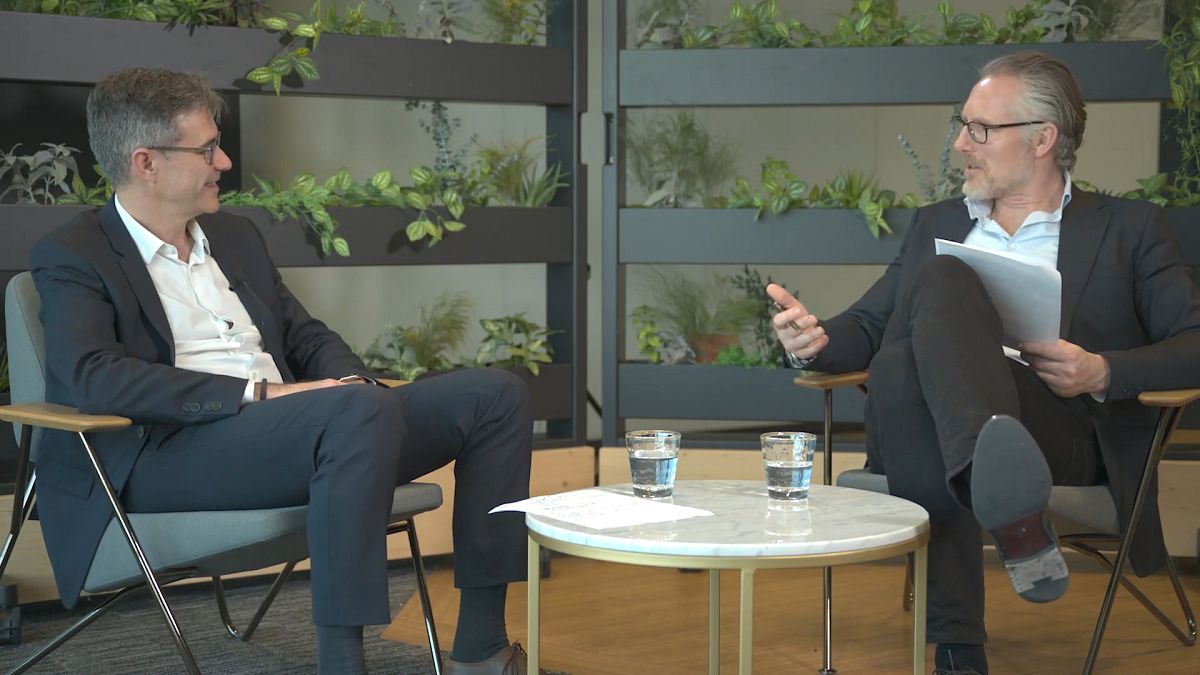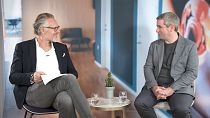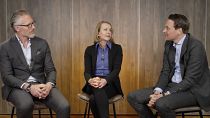Don’t have the perfect lip colour to match your evening dress?
If you’ve got a L’Oreal customisable make-up dispenser on hand, no problem. Simply select your desired lip colour from the digital colour palette on the app and watch as your dispenser blends a lipstick by mixing the colour cartridges inside. Take a lip brush to apply your new lip colour dispensed from the machine - all in the comfort of your home and within a minute.
Tech-enabled beauty experiences such as these are what the cosmetic multinational believes to be the future of beauty.
Speaking on the SAP Euronews Next vodcast, Stéphane Lannuzel, Beauty Tech Director at L'Oreal said tech is driving almost all industries forward and beauty is no different. With over 36 international brands including YSL, La Roche and Garnier and over 500 patents under the L’Oreal umbrella, technology is “at the core” of integration, decision-making and global growth.
“Tech helps us to create strong and memorable brand experiences. It helps us detect emerging trends, understand what to offer and when, and it facilitates a continuous connection with our customers,” said Lannuzel who directs the Beauty Tech program at L'Oréal in Paris.
Artificial intelligence, data analytics and the Metaverse (AR/VR) are just some of the applications used to optimise ecommerce channels and help product teams uncover new opportunities.
“Many companies today make all sorts of business decisions based on data. The more we can capture, make sense of and share, the more confident we can be about the future direction of our business and industry”.
In the vodcast, Lannuzel goes on to discuss with host Jesper Schleimann the deeper value tech brings, not only to customers but also to more than 85,000 people working at L’Oreal worldwide.
Using data to make business more transparent
Consumers want more transparency. They want to know where a product comes from, how it’s made and the values of the company behind the product. Whether it’s related to sustainable packaging, supply chains or how raw materials are sourced - data is making business decisions and processes more transparent.
Transparency plays a growing importance in the buying and loyalty decisions of consumers today and that’s especially important for fast moving consumer goods (FMCG) companies like L’Oreal to understand, says Lannuzel.
“Our view is that if we can improve and increase that positive connection to our product, whilst also influencing the experience - either online, in a physical beauty shop, or at home - then we should focus on that.
“With technology, we are better able to understand that journey and share information and this is why we believe technology needs to be at the core,” he said.
Along with transparency, personalisation is also becoming a major theme in the beauty industry which can set data-driven companies apart from competitors.
Diagnostic services, for instance, can help a consumer decide on the right foundation without the need for a human assistant. By taking a digital image of a customer’s face, algorithms and machine learning can read the skin type and advise on the right cream or foundation as well as share other personalised beauty insights.
Finding trends in artificial intelligence and big data
Creating bespoke services that lead to new growth is not the only benefit of using tech. With over 30 per cent of global revenue generated from e-commerce, analysing information on where, when and what a customer buys, the reviews and ratings of products online, influencer activity and social media can provide important clues on emerging trends.
L’Oreal’s AI Trend Detection Engine reads and analyses data online to spot keywords or repeat themes to help detect the trends of tomorrow. With a global footprint and hundreds of products under the L’Oreal banner, the insights extracted from online data can be highly valuable.
“We have a mantra called ‘see what is starting’. Using the insights from machine learning, our people can research and experiment to see if these trends might help us to create a new generation of products. It’s very interesting”.
Creating a beautiful experience both inside and out
Whilst most innovative companies focus on delivering the best possible experience for their customer, there is a growing shift - particularly in tight labour markets - for leaders to focus on creating a “beautiful” experience for employees too.
Lannuzel says it’s managing and empowering people that are most important to his role and the successful use of tech at L’Oreal.
“My main mission is to take care of people, stretch their minds so they can experiment and unlock the best value from the tools that we can give them. Digital talent has high expectations of a company like ours so by showing people they can work with cutting-edge tech, well that helps us to differentiate and attract talent.
“As leaders, it’s important to have this dual focus so you build a beautiful company for the future as well as an industry for the future”.
• Click on the media player to listen to the full vodcast between Stéphane Lannuzel, Beauty Tech Director at L'Oreal and Jesper Schleimann, Strategy and Innovation Officer at SAP.






